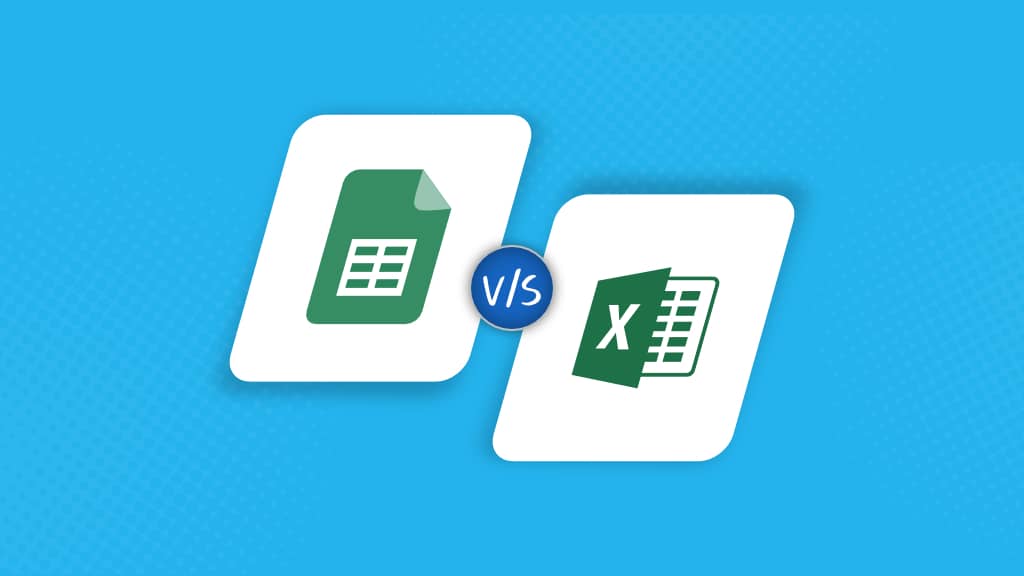Quick question: How often do you use spreadsheets in your job?
When I started my career, knowing how to use Excel sheets was a must for almost every job.
At the same time, Google Sheets was just starting as an online alternative to Excel, and there was no discussion comparing Google Sheets vs. Excel.
Fast forward to today, the business landscape has undergone significant change, and so have both tools.
It’s no longer solely about making informed decisions based on data; it’s about making those decisions fast. And the traditional rows and columns format is no longer the most productive approach.
As your business expands, so does your data, and unfortunately, the likelihood of errors increases in parallel.
A study conducted by Dartmouth College in the USA revealed that only 3 out of 50 spreadsheets were error-free when evaluated across 50 diverse operations.
This means there’s a staggering 94% chance your business could face serious setbacks if you rely too heavily on spreadsheets.
Now, don’t get me wrong. I don’t have anything against spreadsheet software. I am a marketer who uses sheets daily for things they are good at.
However, I have also faced the downfall associated with using spreadsheets to handle everything.
Fortunately, there are solutions to meet these challenges head-on. One such solution is a dedicated all-in-one project management tool that can seamlessly handle your project-related data, enabling your business to reach new heights.
But how you might ask?
In short, by saving you a significant 50% of the time.
In this article, we will go through the limitations of using Google Sheets and Excel for managing your business and find the ultimate all-in-one solution that functions as a well-oiled machine for processing your data, ensuring you make the best and error-free decisions.
What is the difference between Google Sheets and Excel?
The main difference between Google Sheets and Excel is that Google Sheets is a cloud-based spreadsheet tool that allows for real-time collaboration and access from any device with internet connectivity. Whereas, Excel is a more feature-rich, desktop-based spreadsheet program with advanced data analysis and visualization capabilities but requires installation and is less collaborative in real-time.
Google Sheets vs. Excel: A quick comparison
Ah, the great Google Sheets vs. Excel debate, a rivalry as legendary as the Tab vs. 4-Spaces coding argument.
In one corner, we have Excel, the heavyweight champion of hard-core data analysis and visualization.
In other, we have Google Sheets, the upstart contender praised for its flexibility and collaboration feature.
Which one is better?
The one that fits your business requirements.
Excel has been the go-to tool for number-crunching, financial modeling, and complex data analysis for decades.
With an extensive array of formulas, functions, and features, it is the preferred choice for professionals for advanced calculations. Additionally, the data visualization features allow for easy communication of the information.
On the other hand, Google Sheets excels in its simplicity and accessibility, offering users the ability to access and edit spreadsheets from anywhere.
Its real-time collaboration capabilities are second to none, allowing multiple users to work on a sheet simultaneously, comment, and track changes effortlessly. This makes it a compelling choice for teams dispersed across different locations or working remotely.
My choice: I prefer Google Sheets over Microsoft Excel because my work as a marketer requires frequent collaboration.
I know, it looks like more of a bias than a rational argument.
So, I turned to my colleagues, who have used spreadsheets for various purposes, to share their insights on using both the tools in their careers, so far. Here’s what they have to say:
- “Both tools have some limitations with what you can do with your data, and there are occasional bugs that don’t seem to get fixed.”
- “If you’re a pro at using Excel or Google Sheets, they can be incredibly powerful, but pushing them beyond their intended purposes can be overkill.”
- “Even a small mistake when entering a formula can completely mess up your calculations, so it’s important to be careful.”
- “While they might seem logically reliable at first, it can be tricky to get accurate results. It’s not the best choice for complex tasks, so keep it for simpler jobs or prototyping.”
- “One thing that frustrates me about Excel is the effort you need to put in to get results.”
In a nutshell, while Google Sheets or Microsoft Excel might seem like a cost-effective solution, in today’s fast-paced economy you can end up spending invaluable time and resources while using them for complex purposes.
What are the limitations of using spreadsheets for managing projects?
Here are some of the challenges associated with using spreadsheets for managing projects and operations:
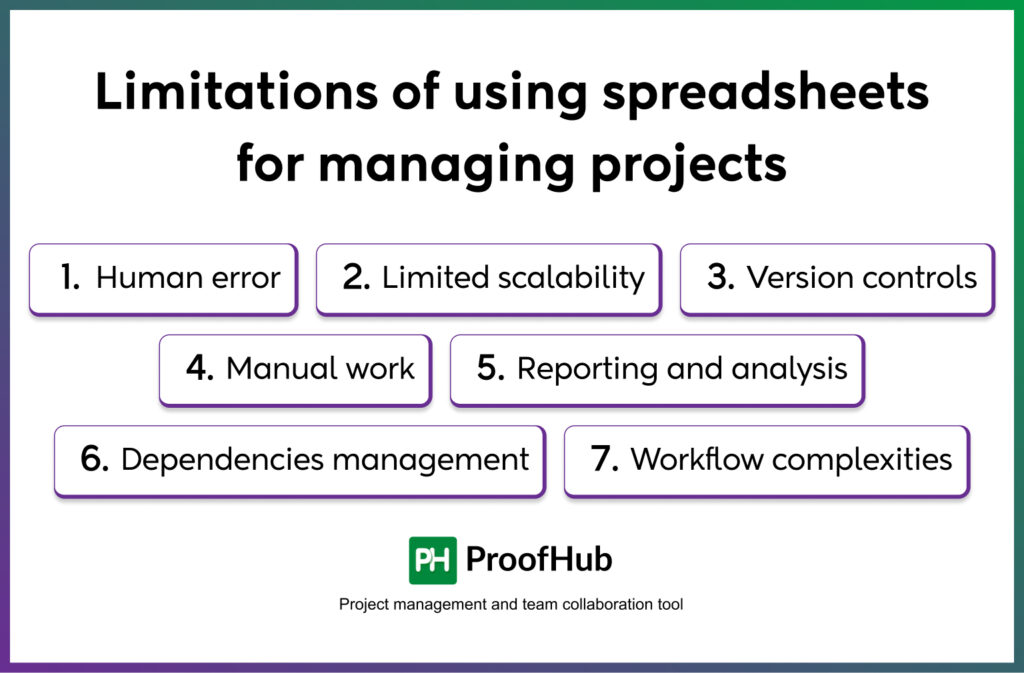
- Human error: When we use spreadsheets to handle data, there’s a big chance of people typing in the data wrong or using old information.
Even small mistakes in spreadsheets can cause big problems (like $24 million big), easily off-railing your whole project.
- Limited scalability: As projects grow in complexity and size, managing them with spreadsheets becomes increasingly cumbersome.
Tracking numerous tasks, dependencies, and resources can become overwhelming, and it may lead to data overload or inefficiencies.
- Version controls and data integrity: Though both Google Sheets and Excel provide the functionality to view previous versions and revert to them, they might not provide you as much flexibility as a dedicated project management tool.
Additionally, the data within spreadsheets can easily be copied and manipulated, making it difficult to keep track of changes.
- Manual work: Spreadsheets lack automation capabilities for recurring task assignments, notifications, and progress tracking, leading to more manual work for managers.
- Reporting and analysis: With spreadsheets, extracting meaningful insights from large datasets may require more effort and time.
- Dependencies management: Managing task dependencies can be tricky in spreadsheets.
While it’s possible to create dependency links, visualizing and managing complex dependencies can easily become overwhelming when project data increases with time.
- Workflow complexities: Due to difficulties and restrictions in data sharing via spreadsheets, their utilization often demands manual and repetitive processes of updating the information.
Consequently, managers may end up spending limited resources and time on redundant tasks.
These are just a few of the limitations. If you are still not convinced, I have extensively mentioned in this article why spreadsheets are absolutely a no-go for project management.
But make no mistake here: Spreadsheets are, and will always be, an essential tool in the tech-arsenal of all kinds of businesses.
However, for project management, you can use something far more reliable and efficient.
A perfect solution: ProofHub
Now, you will ask, why ProofHub?
ProofHub is a robust all-in-one project management and team collaboration platform designed to overcome all the challenges and inconveniences faced in managing projects using spreadsheets.
It provides a comprehensive, though undeniably intuitive, interface for organizing your project data and seamlessly collaborating with teammates to make the best out of their team efforts.
In simple terms, It brings together the power of organized information and coordinated effort under one roof.
With ProofHub, you get a secure centralized cloud-based platform to dump and organize all your data and project-related information.
You can easily streamline workflows, automate routine tasks, and eliminate the need for manual data entry and tracking.
But that’s not it. ProofHub is loaded with features that eliminate the need to juggle different apps, let alone the sheets, to work collaboratively. This saves you valuable time and resources that you could allocate to more strategic initiatives.
Here are the few key features that make ProofHub a go-to choice for project management across several industries:
- Task management: You can create task lists, set due dates, and ensure team members always know what’s next with four different project views.
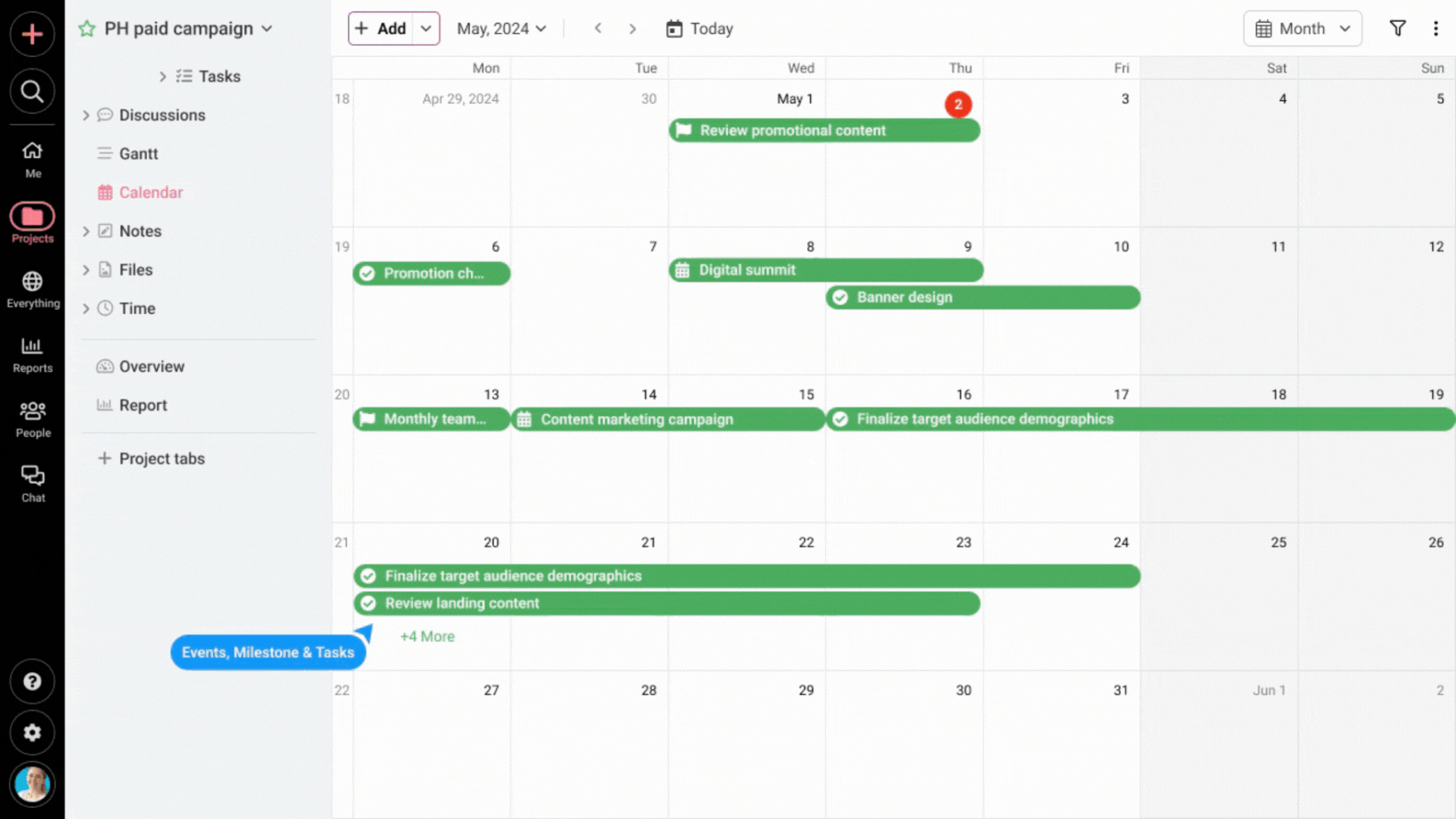
- Real-time communication: With ProofHub’s inbuilt chat feature, team members can easily share information, files, and documents to and fro.
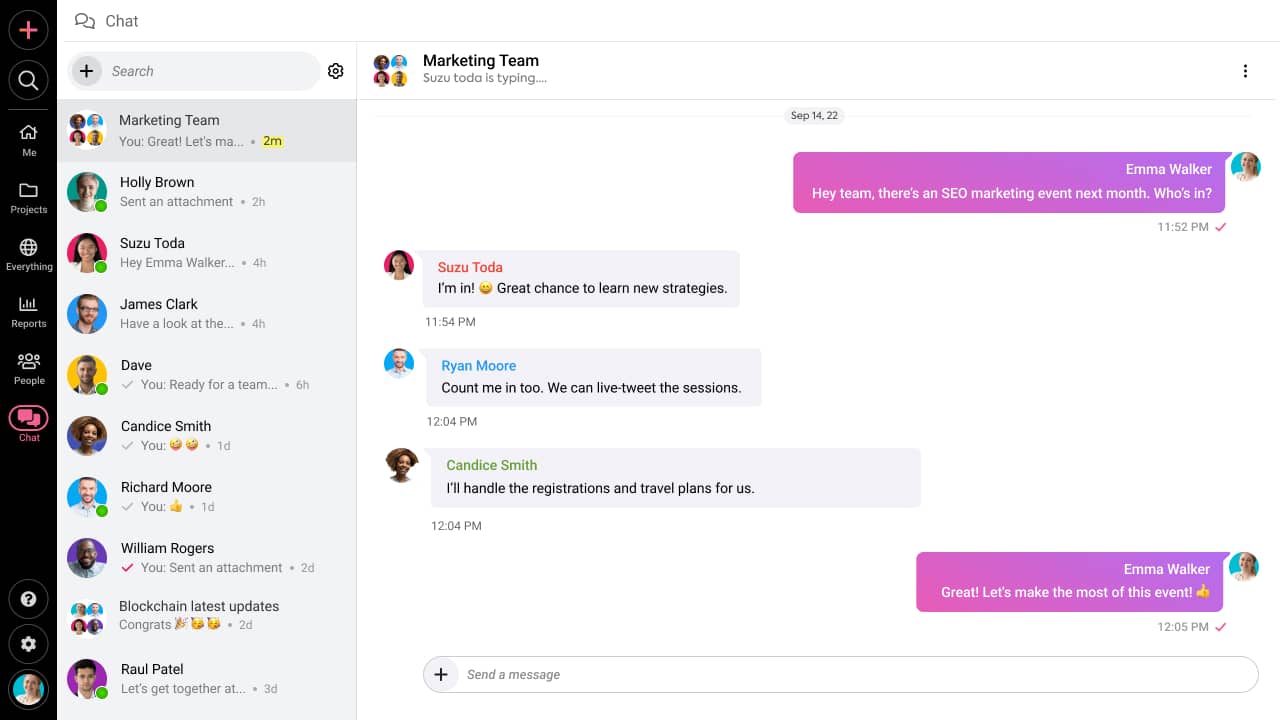
- Custom workflows: You can create tasks, prioritize them, and create stages with customizable workflows.
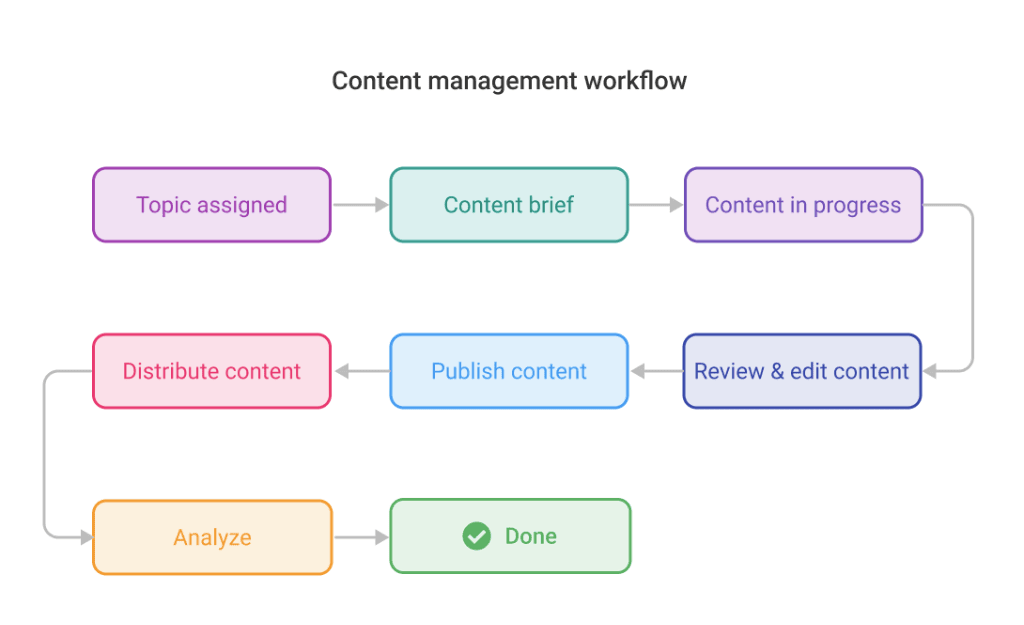
- Reporting and analysis: Say goodbye to the chaos of tracking versions and access permissions. ProofHub automatically logs changes, ensuring everyone stays informed about updates.
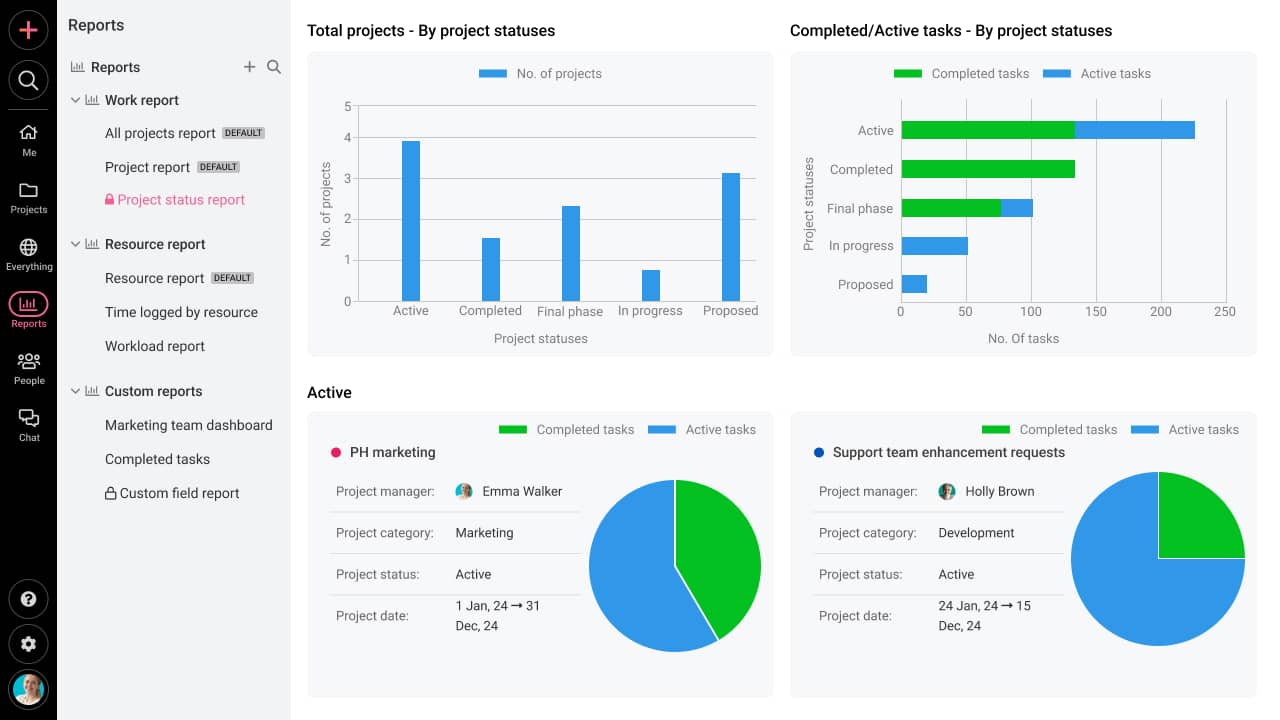
- Gantt charts: ProofHub offers interactive Gantt charts to provide a bird-eye view of where things stand across your projects.
You can analyze the critical paths and remove any bottlenecks or roadblocks.
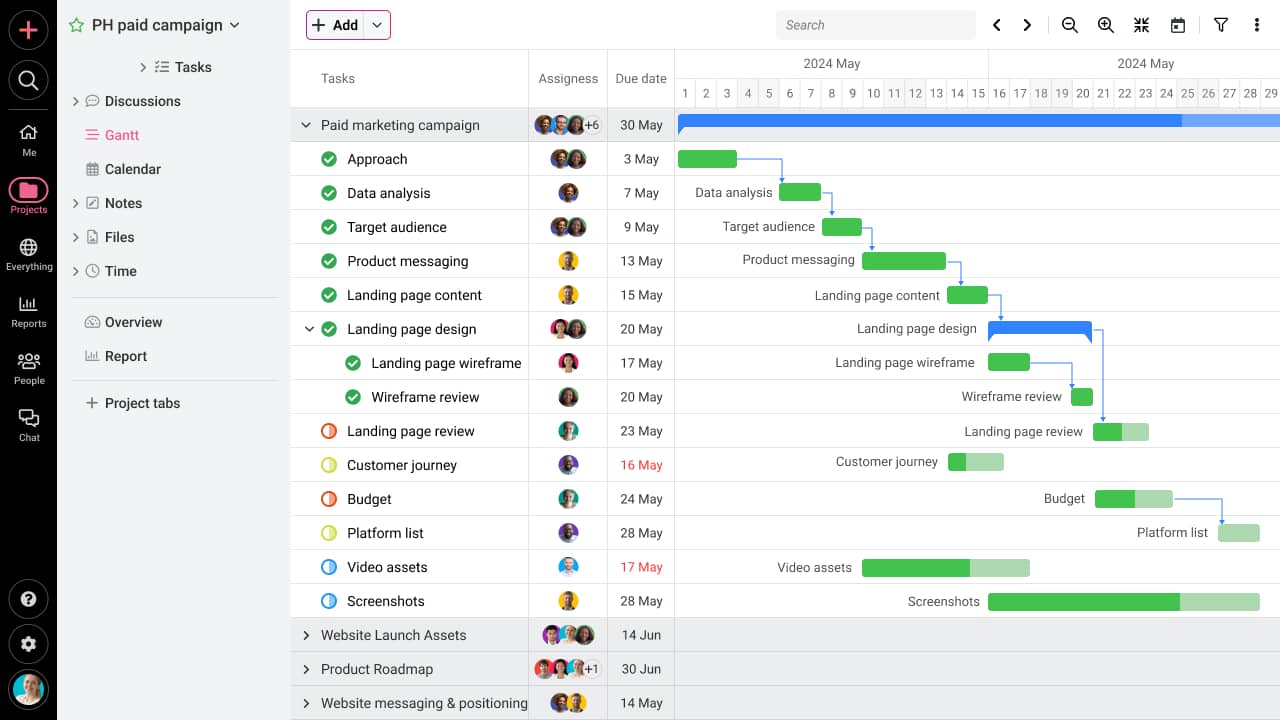
- Real-time insights: No more waiting for meetings to get project updates. ProofHub offers real-time updates, providing a constant pulse on your projects.
Stay informed and make adjustments as needed to stay on track.
- Time tracking: Team members can easily log their work hours (or record it), and generate automatic reports to provide insights into time spent on each task throughout the project.
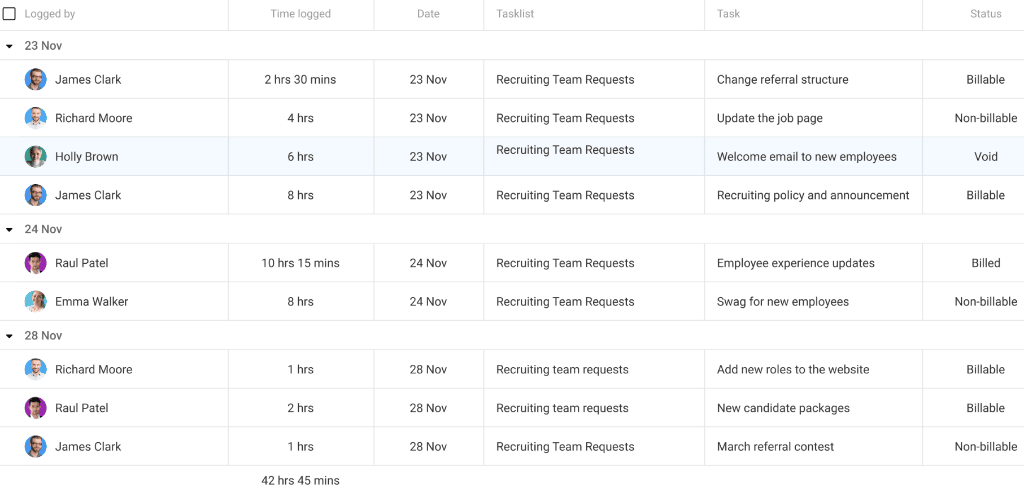
- Custom roles: Team members can get assigned specific permissions to limit access to critical information.

- Integration with cloud storage services: ProofHub offers seamless integration with cloud storage services like Google Drive, One Drive, box, and Dropbox. You can access and import years-old data or continue using the services in conjunction with ProofHub.
The ProofHub advantage
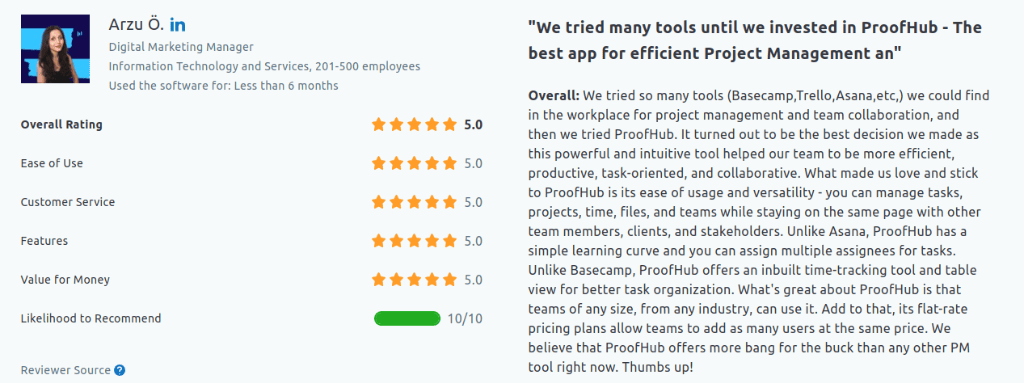
ProofHub, being an all-in-one project management and team collaboration solution offers several ways to help teams manage their work.
When they started using ProofHub, it provided a single place to manage tasks, stay connected with the team, and easily share task updates. This saved them a lot of time that was previously spent switching between different apps.
Here are some of the most prominent attributes of ProofHub:
- Streamlined task management, reducing manual updates and preventing tasks from slipping through the cracks.
ProofHub provides a structured task management system with four different project views, allowing for clear task assignments, and due date settings, and ensuring that team members are always on the same page. It eliminates the need for manually updating task lists and reduces the chances of tasks slipping through the cracks.
Use-case: In a software development project, the development team can create task lists for different features, set deadlines, and assign tasks to specific team members.
This ensures everyone knows their responsibilities and deadlines, leading to more efficient progress.
- Enhanced collaboration with organized discussions, instant chat, and simplified file sharing for seamless teamwork.
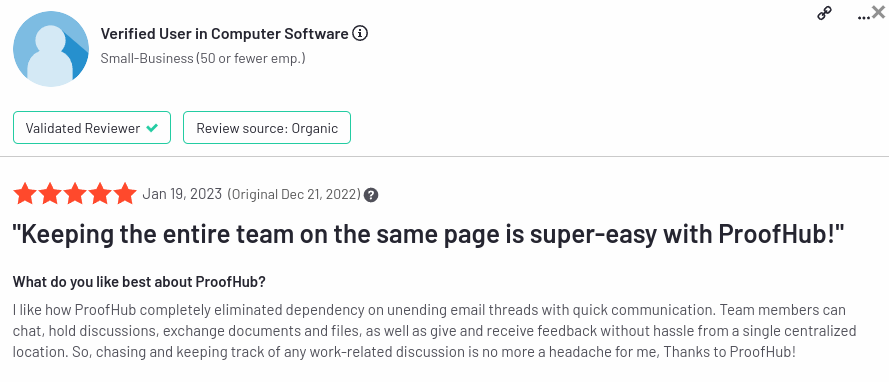
ProofHub offers a plethora of collaboration features to take teamwork to new heights. We have dedicated discussion boards that keep conversations organized, eliminating lengthy email threads.
Our real-time chat tool ensures instant communication, while file sharing is simplified, preventing version confusion. Task collaboration is seamless with “@ mentions” in comments, allowing for easy updates and file attachments within tasks.
Lastly, proofing feature for streamlining feedback and approvals in the review process.
Use-case: Imagine a marketing team coordinating a product launch. With ProofHub’s collaboration features, team members can discuss marketing strategies, share promotional materials, collaborate on the event schedule, and provide feedback on campaign creatives—all within a centralized platform.
This fosters better communication, reduces delays, and ultimately leads to more successful product launches.
- Repetitive task automation to reduce manual work.
ProofHub’s task automation feature streamlines your workflow by eliminating the need to navigate between multiple tools, sift through endless email threads, or wrestle with cumbersome Excel spreadsheets.
You can automate routine tasks, freeing up valuable time and mental bandwidth for more critical responsibilities.
Whether it’s sending regular status updates, scheduling recurring meetings, or distributing weekly reports, ProofHub takes care of everything.
Use-case: Suppose your marketing team needs to share weekly progress reports with various stakeholders. Instead of manually compiling and distributing these reports each week, they can give guest users access to the auto-generated reports.
This not only saves time but also communicates a sense of transparency.
- Efficient progress tracking to eliminate roadblocks.
With ProofHub, you don’t need to go through the hassle of manually logging your task progression. It automatically does that for you, so you can focus on more important tasks. The changes made get reflected in real-time, making it easy to keep track of task progression.
Use-case: A marketing team deals with several creative assets, ranging from ad creatives to landing pages. While spreadsheets are great for tracking the rankings of landing pages, they can’t help much in the creation phase.
ProofHub, on the other hand, simplifies the tracking process for any changes made to these assets. You can set dependencies to avoid any roadblocks and speed up the overall process without worrying about losing track.
- Better time management with in-built time tracking and timesheets.
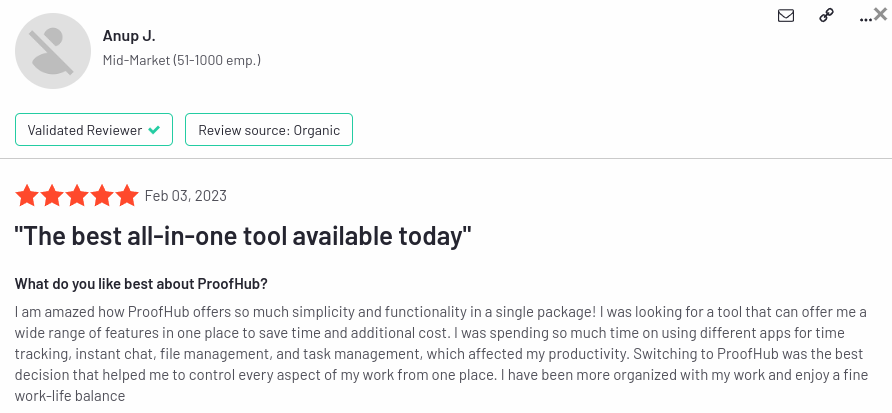
Your team members can log their work hours or record them directly in ProofHub. This feature provides insights into the time spent on each task throughout the project, aiding in resource allocation, accountability, and project scheduling.
Use-case: In a consulting project, team members can log the time spent on client meetings, research, and report generation. This data can be used to evaluate the profitability and efficiency of the project.
- Cost-effective and scalable solution.

ProofHub stands out among other project management tools for its flat pricing structure with no per-user fee, making it one of the most scalable solutions for project management and team collaboration.
Getting started with ProofHub
ProofHub provides an intuitive platform with a robust architecture to handle all the aspects related to your projects.
Let’s start by understanding how it organizes your data.
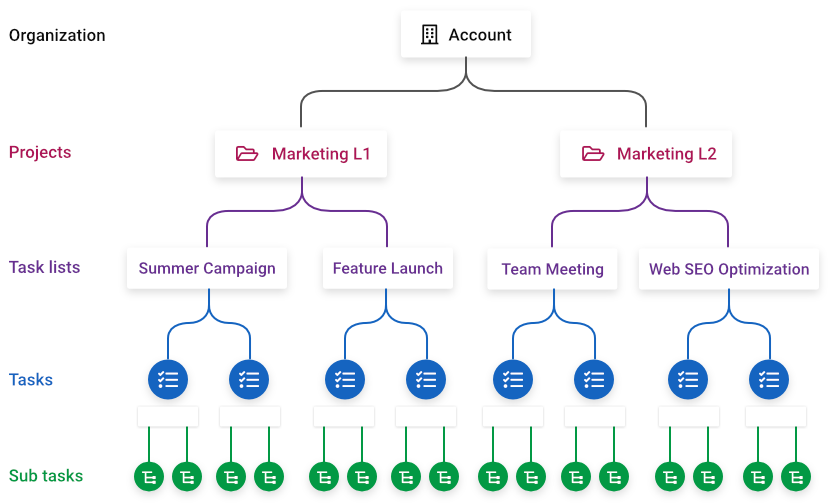
At the top of this hierarchy is “Account,” which represents your organization’s login details or shared domain in ProofHub. It connects everyone in your organization.
Below that, we have “Projects,” where you can organize your work based on diverse operations, projects, or anything of the sort.
“Tasks” are the next level and are stored within projects. You can create task lists within projects to keep track of tasks, monitor progress, and communicate with your team.
Each task list can have its unique workflow. They help teams know who is working on what and also serve as a place to store files, documents, discussions, and more.
If tasks are too big, you can break them down into smaller parts called “Subtasks,” which can have different assignees and due dates and can even be turned into main tasks later.
If you have been using spreadsheets to handle your project data so far, I understand that the mere thought of transitioning can give you chills. But let me assure you that it couldn’t be any easier. All you need to do is export your data in a simple .csv format and import it into ProofHub.
Plus, our customer support team is always happy to help at every step of the process.
Conclusion
Google Sheets and Excel have their merits, but they come with limitations. They are primarily designed for individual data management. Handling complex projects with numerous tasks and dependencies can be tough, and spreadsheets are not the best solution.
On the other hand, ProofHub offers a comprehensive solution for project management and collaboration. It provides a wide range of tools, such as task management, Gantt charts, and Kanban boards, suitable for projects of all sizes.
With real-time collaboration features like file sharing and discussions, ProofHub fosters efficient teamwork. Scalable and user-friendly, ProofHub is the ideal choice to enhance productivity, streamline workflows, and improve overall business performance.
FAQs:
Is Google Sheets better than Excel?
Whether Google Sheets is better than Microsoft Excel or vice versa depends on your specific needs and preferences. Both have their own strengths. Google Sheets excels in collaboration and accessibility, making it great for teams, while Excel offers more advanced features and customization options for complex tasks. The choice depends on your specific needs and preferences.
What are 3 major benefits of using Google Sheets over Excel?
Three major benefits of using Google Sheets over Excel are:
Real-time collaboration: Google Sheets allows multiple users to work on the same spreadsheet simultaneously, making it easy for teams to collaborate in real-time, without the need for constant file sharing or version control.
Accessibility and mobility: Google Sheets is cloud-based and accessible from any device with an internet connection. This flexibility enables users to work on their spreadsheets from anywhere, fostering productivity and convenience.
Cost-efficiency: Basic features of Google Sheets are available for free with a Google account. This can be a cost-effective option for individuals and small businesses, as it eliminates the need for purchasing Excel licenses.
Does Google Sheets have a limit?
Yes, Google sheets offer limited rows and columns for managing and processing data. You can add rows to your sheet, which shouldn’t exceed 10,000,000 cells. If you have enough space, you can add up to 200,000 rows at once. However, columns are labeled from A to ZZZ, and once you reach ZZZ (column number 18,278), you can’t add any more columns.
What is the main purpose of Google Sheets?
The main purpose of Google Sheets is to provide a cloud-based spreadsheet application for creating, editing, and managing spreadsheets. It allows users to input, manipulate, and analyze data in a tabular format, making it useful for tasks such as data entry, budgeting, financial analysis, and collaborative work. Google Sheets also offers real-time collaboration features, making it easy for multiple users to work on the same spreadsheet simultaneously, which is particularly beneficial for teams and remote work environments.
